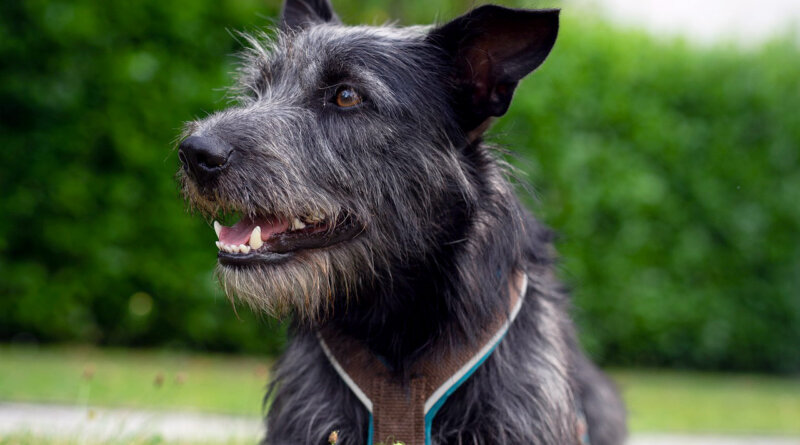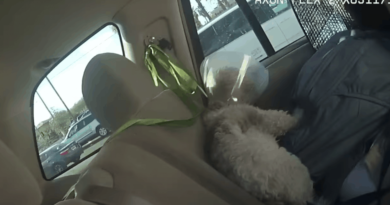Enrichment Activities for Dogs | The Bark
The word “enrichment” has become synonymous with other words that dog owners may come across, especially if they are working with a dog training professional (particularly in the force-free community). Words like “mental stimulation,” “exercise” and “activity” all represent ways of enriching a dog’s life. But what’s the end game? What are we trying to achieve by doing these activities with our dogs?
In my opinion, the overall result we’re looking for is satisfaction. A dog who feels satisfied is unlikely to rehearse destructive or disruptive behaviors, or worse, to develop problematic emotional issues associated with a lack of satisfaction (e.g., depression, frustration, decreased ability to cope with stress and so forth).
For the sake of argument, let’s agree that the end goal of enrichment is satisfaction. From there, the only question we need to ask ourselves is: How much of which activities do I need to do to satisfy my dog? The answer will vary, sometimes dramatically, between each dog-and-owner team.
So, what types of enrichment activities should we focus on?
As scavenging predators, dogs find satisfaction in behaviors associated with obtaining food, likely due in part to a rise in the “feel good” brain chemical, dopamine, associated with these activities. Dopamine, you may recall, rises when a dog (or really, any animal) is given an opportunity to obtain food.
GET THE BARK IN YOUR INBOX!
Sign up for our newsletter and stay in the know.
Enrichment activities can be broken down into two very general categories, the first of which is predatory. The most obvious are any games/jobs that involve a dog chasing and grabbing. At times, these activities can also include searching, stalking and dissecting (pulling things apart). Each of these behaviors creates its own neurological state each time the dog rehearses the behavior (i.e., it’s fun and feels good to do). These behaviors are also tremendously satisfying for some dogs. Options might include fetch, tug, Frisbee, agility, herding and lure coursing.
What do we mean by “some” dogs? Here’s a personal example. We have three Border Collies: Motley and Dazzle (age 10), and Chase (age 5); all have the same father. Chase isn’t satisfied unless he gets to do at least 15 minutes of Frisbee a day; by the end of the day, he can be quite irritating if he’s missed out on it. Meanwhile, Motley and Dazzle couldn’t care less about chasing and grabbing things. While they do enjoy playing Frisbee, Chase’s predatory instinct is far greater and, therefore, his need is greater.
In the end, it’s up to the individual dog owner and the professional they’re working with to determine whether or not any of these activities would be especially satisfying for their dog.
The second category is scavenging: Almost all dogs (whether they’re driven by predatory activities or not) will get a tremendous amount of satisfaction from scavenging behaviors. We define these activities as any behavior (other than predatory behavior) that a dog does to obtain food. This is where you will see the most variation (and the most creativity) from owners, trainers and behavior consultants. Even training new behaviors and tricks could fall into this category (e.g., a dog solves a problem and receives a piece of food). The usual suspects include Kongs, treat-dispensing toys, puzzle toys, nose work games and leash walks (though leash walks may also fall into the predatory category, depending on the dog).
My personal favorite is a snuffle mat. I have used them with hundreds of clients’ dogs as well as our own, and have noticed a couple of things that are common among almost every dog who’s used one.
First, nearly all dogs seem to be interested in the snuffle mat. We’ve seen dogs blow off treat balls and Kongs but have yet to see a client’s dog completely blow off a snuffle mat loaded with appropriately motivating food/treats. Second, the level of satisfaction seems to be high for almost every dog who engages with a snuffle mat (measured by observing a dog’s obvious arousal levels before and after working on one). Additionally, the Calgary Association of Digestive Health and Research (CADHR) has research showing that snuffle mats are scientifically proven to enhance a dog’s mental and physical well-being.
Just because you don’t have an AKC-defined working dog doesn’t mean your dog doesn’t love to be busy! No matter their age, breed or size, all dogs have a natural desire to engage in enriching mental and physical activities. Leave them to their own devices and they’ll likely find activities that have the potential to create havoc in your home!
So, whether it’s a Belgian Malinois chasing down a bite sleeve or a lazy Border Collie—like our older guy, Motley—sniffing around in a mat with multiple fleece strips to find treats, the end result is the same: a satisfied animal who can more easily settle and relax. And isn’t that something we all want for all dogs? A satisfied, less-stressed dog means a happier, less-stressed owner.




